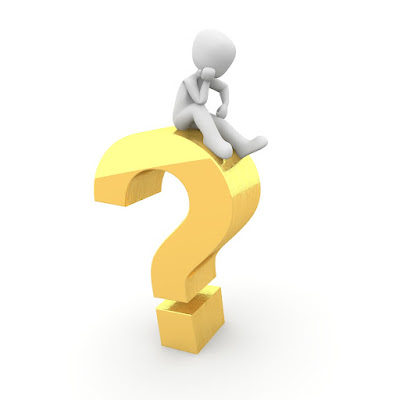A Puzzlement
Punctuation can be a bit puzzling. The little guy perched atop a golden question mark in today's photo is thinking about where to put commas when he uses an introductory clause or phrase. Is it big in the world of writing? Probably not. If you don't do it correctly, will an editor notice? Most likely.
Punctuation is not a frill. It's a necessary part of writing. You've all heard the old example of tossing a bunch of commas in the air, and where they land is where they stay. Cute, but not correct.
I critique a lot of submissions at my online writing group. Our critiquers look for an overall thought on the piece but also the mechanics. Things like tense usage, passive vs active, show vs tell, and punctuation. Even something as small as an extra space between sentences.
One of the most common errors I see is the misuse of the comma when a sentence begins with an introductory phrase or clause. For clarity sake, a phrase is a group of words while a clause is a group of words with both subject and verb.
A. If I see the bus coming, I'll ride to the ball game. (In this sentence, the second part of the sentence could stand alone. Use a comma after the introductory clause)
B. When sad, people frown. (Without the comma, the sentence doesn't make sense. When sad people frown.)
C. Pending the outcome of the board meeting, I will vote the way my conscience directs me. (The second half of the sentence can stand alone)
Another reason to use the commas after an introductory phrase or clause is that it gives the reader a chance to pause, especially if reading aloud. Look at Sentence C. Read it aloud. That comma is placed where a natural pause for breath is needed.
When you use the comma correctly in a sentence with an introductory phrase or clause, it becomes a habit. You won't have to think about it. You'll automatically hit the comma key, or put it there with your pencil if writing by hand.

No comments:
Post a Comment